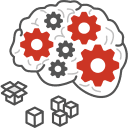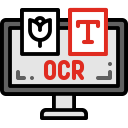
Data Processing Platform Feature Overview
A complete toolkit for processing media-related files,
data extraction, normalization, and organization.
Designed for media service providers, OTT providers, and translation organizations that have their project management and editing platform, and occasional/ad hoc users of services. Media Studio Data Processing Platform offers all the core processing functions as both a REST API and a comprehensive web portal.
Media Studio Data Processing Platform provides a comprehensive toolkit for processing, analyzing, organizing, preparing, and creating subtitles and media assets.
Everything you need to organize, clean, normalize, and structure your subtitle and media assets is provided in a single package. A comprehensive set of data processing and analysis tools reduce human effort and increase productivity and accuracy for data preparation tasks such as source language template creation.
Legacy data can be analyzed, organized, matched, and extracted to create new data assets that can be further leveraged as translation memories, or in machine learning and artificial intelligence tasks. Upload your legacy language assets and convert them into data gold.

Subtitle Optimized Machine Translation
Subtitle optimized machine translation is more than just translation. Most machine translation platforms perform very poorly on subtitle content as they are trained primarily on data from documents. Subtitles are full of dialog, conversation, slang, and idioms. Media Studio subtitle engines have been specifically trained on tens of millions of bilingual sentences that are based around dialog and discussion. This produces significantly higher translation quality and ensures the resulting translation sounds natural. Different video genres can also be applied to produce different styles of output.
Time savings go far beyond automatically translating subtitles. Configurable settings allow for time cues to be adjusted based on target language reading speed, locked to the original times, and a range of other adjustable parameters. Translated sentences are split across subtitles in natural positions using where a human would split them using artificial intelligence to make the subtitle read naturally within the user-configurable parameters such as Characters Per Line (CPL).
Together these features more than double productivity for translator and editors. Used in conjunction with Media Studio’s Subtitle Editor, even greater productivity gains are possible.
![]() Workflow Studio is included with Media Studio to extend custom workflow capabilities and advanced automation tasks.
Workflow Studio is included with Media Studio to extend custom workflow capabilities and advanced automation tasks.

Available as two Platform Editions specifically designed to match different business needs.
- Product Overview
- Features
- Benefits of Media Studio (White Paper)
- Subtitle Optimized Machine Translation
- Data Security & Privacy
- Secure by Design
- Project Management and Editing Platform
Project, People, Resource, Video, and Subtitle Management
- Data Processing Platform
Data Creation, Analysis, Cleaning, and Organization
Feature Overview

Each feature is built on a core of Artificial Intelligence, Machine Learning and Natural Language Processing
Machine learning enables machines to work more like humans so that humans don't have to work more like machines. Each feature is designed to augment human intelligence, enhance productivity, increase quality, and reduce cost. Artificial intelligence enables processing and organization of data that simply not be cost-effective or feasible with a human only approach.
Subtitle-Optimized Machine Translation
Subtitle-optimized machine translation delivers faster, cheaper, higher quality, and more consistent translation output than a human-only solution. Fine-tune for Characters Per Line (CPL), part-of-speech, structure balancing, and more. Powerful artificial intelligence driven processes reduce human effort and increase productivity.

Subtitle Translation

Synopsis Translation

Document Translation

User Review Translation

Genre Specific Translation Styles within a Single MT Engine

User Configurable Formatting Controls
Extract and Normalize Dialogs, Scripts and Screenplays
Extract unstructured and non-standardized dialogs, scripts, and screenplays into useful formats such as dialogs, SRT, or other standardized and normalized document structures.

Dialog Extraction
Automatically extract text from Directors Scripts to create dialogs, subtitles or captions. Extract from raw unstructured document formats such as PDF, images, Microsoft Word and more.

Format Normalization
Transcribe and Synchronize Video and Audio
Automated Speech Recognition (ASR) technologies can reduce human effort and time to transcribe a video. When used in conjunction with a user-provided dialog or extracted dialog from Media Studio tools, accurate transcription of a 1-hour video is reduced from 8-10 hours to between 2-3 hours.

Transcribe Audio

Dialog Synchronization
Synchronize dialog sentences with spoken times from a video or audio track to create timed-text files. Overcome voice recognition inaccuracies with synchronized dialog and highly accurate timed-text file output.

Auto-Conform
Compare video, audio, and subtitles to produce an automated Edit Decision List (EDL) report. Match time code and other changes with the original video and audio source material to produce to accurately determine changes.
Extract and Translate Glossaries and Terminology
Reduce the time to create a glossary for a series from hours to minutes with language professionals validating and fine-tuning the automated results. When creating bilingual glossaries, language professionals need only check and adjust suggested glossary phrases, increasing their productivity from an average of 20 to more than 160 terms per hour.

Glossary and Term Extraction
Analyze an individual subtitle or an entire series to automatically extract glossary terms in seconds.

Bilingual Glossary Creation
Automatically resolve glossary terminology across languages. Recall existing user defined terminology translations and suggest new terminology translations.
Match and Synthesize Bilingual Data
Turn your legacy language data assets into “data gold”. Many media service providers have tens of thousands of files that have been built using multiple platforms and with sometimes non-optimal management controls and filing systems. Simply upload files and automatically identify and match their bilingual document pairs and extract high-quality bilingual sentences. Even monolingual data can be leveraged as a driver for synthetic data. Use your data assets to bolster your own custom machine translation engine.

Bilingual Subtitle Pair Matching

Bilingual Sentence Matching

Data Synthesis

Customize your own Machine Translation Engine
Leverage your bilingual and monolingual data assets to create your own high-quality custom machine translation engines. Custom engines produce output in your vocabulary, writing style, and context, reducing human effort and increasing productivity.
Advanced Subtitle Analysis and Processing
Basic organization of subtitle and data files is often a challenge, especially for legacy or acquired third-party data. Automatically analyze, convert, extract, compare, measure, normalize, and rename data in bulk.

Language Identification

Bulk Renaming

Genre Identification
Automatically detect multiple genres for any subtitle based on the subtitle text. Genres include Action, Adventure, Animation, Biography, Comedy, Crime, Documentary, Drama, Family, Fantasy, Film Noir, Game Show, History, Horror, Music, Musical, Mystery, News, Reality TV, Romance, Sci-Fi, Short Film, Sport, Sports, Superhero, Talk Show, Thriller, War, and Western.

Restructure and Reformat Subtitles
Automatically normalize, restructure and reformat subtitles and captions to meet specific requirements. Change Characters Per Line (CPL), minimum and maximum display time, gaps between subtitles, and formatting.

Burn and Encode

Burned-In Subtitle Recognition

Bulk Encoding Conversion

Bulk Format Conversion

Compare Multiple Subtitles

Measure Change Effort
Media Studio V2.0 Beta Access Registration
Error: Contact form not found.
Media Studio V2.0 Beta Access Registration
Your registration has been received successfully.
An Omniscien team member will review and contact you shortly with Media Studio 2.0 Beta Access information.

